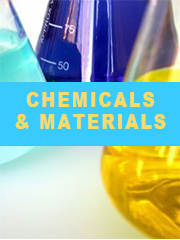Report overview
There are two types of antibacterial stainless steel: one is coated antibacterial stainless steel; the other is alloy type antibacterial stainless steel. Coated antibacterial stainless steel has many shortcomings such as easy wear and peeling during use of antibacterial coating, and it is difficult to maintain long-term antibacterial. Alloy type antibacterial stainless steel refers to the addition of metal copper Cu or silver Ag to the stainless steel material matrix, and after a special antibacterial heat treatment process, small and evenly distributed antibacterial metal particles are formed in the matrix, exposed on the surface of the stainless steel and exposed to the aqueous solution. Or in a humid environment, antibacterial metal ions are precipitated, which destroys the bacterial cell wall and has a bactericidal effect.
This report aims to provide a comprehensive presentation of the global market for Antibacterial Stainless Steel, with both quantitative and qualitative analysis, to help readers develop business/growth strategies, assess the market competitive situation, analyze their position in the current marketplace, and make informed business decisions regarding Antibacterial Stainless Steel. This report contains market size and forecasts of Antibacterial Stainless Steel in global, including the following market information:
Global Antibacterial Stainless Steel Market Revenue, 2018-2023, 2024-2032, ($ millions)
Global Antibacterial Stainless Steel Market Sales, 2018-2023, 2024-2032, (Kiloton)
Global top five Antibacterial Stainless Steel companies in 2022 (%)
The global Antibacterial Stainless Steel market was valued at US$ million in 2022 and is projected to reach US$ million by 2029, at a CAGR of % during the forecast period. The influence of COVID-19 and the Russia-Ukraine War were considered while estimating market sizes.
The U.S. Market is Estimated at $ Million in 2022, While China is Forecast to Reach $ Million.
Coated Type Segment to Reach $ Million by 2029, with a % CAGR in next six years.
The global key manufacturers of Antibacterial Stainless Steel include Baowu Steel, Nippon Steel, Kawasaki Steel, Kobe Steel, Sumitomo Osaka Cement, POSCO, Hyundai Steel, Shanghai Tianbao Stainless Steel and Jiugang Group, etc. in 2022, the global top five players have a share approximately % in terms of revenue.
We surveyed the Antibacterial Stainless Steel manufacturers, suppliers, distributors and industry experts on this industry, involving the sales, revenue, demand, price change, product type, recent development and plan, industry trends, drivers, challenges, obstacles, and potential risks.
Total Market by Segment:
Global Antibacterial Stainless Steel Market, by Type, 2018-2023, 2024-2032 ($ Millions) & (Kiloton)
Global Antibacterial Stainless Steel Market Segment Percentages, by Type, 2022 (%)
Coated Type
Alloy Type
Global Antibacterial Stainless Steel Market, by Application, 2018-2023, 2024-2032 ($ Millions) & (Kiloton)
Global Antibacterial Stainless Steel Market Segment Percentages, by Application, 2022 (%)
Medical Industry
Appliance Industry
Food Industry
Catering
Others
Global Antibacterial Stainless Steel Market, By Region and Country, 2018-2023, 2024-2032 ($ Millions) & (Kiloton)
Global Antibacterial Stainless Steel Market Segment Percentages, By Region and Country, 2022 (%)
North America
US
Canada
Mexico
Europe
Germany
France
U.K.
Italy
Russia
Nordic Countries
Benelux
Rest of Europe
Asia
China
Japan
South Korea
Southeast Asia
India
Rest of Asia
South America
Brazil
Argentina
Rest of South America
Middle East & Africa
Turkey
Israel
Saudi Arabia
UAE
Rest of Middle East & Africa
Competitor Analysis
The report also provides analysis of leading market participants including:
Key companies Antibacterial Stainless Steel revenues in global market, 2018-2023 (Estimated), ($ millions)
Key companies Antibacterial Stainless Steel revenues share in global market, 2022 (%)
Key companies Antibacterial Stainless Steel sales in global market, 2018-2023 (Estimated), (Kiloton)
Key companies Antibacterial Stainless Steel sales share in global market, 2022 (%)
Further, the report presents profiles of competitors in the market, key players include:
Baowu Steel
Nippon Steel
Kawasaki Steel
Kobe Steel
Sumitomo Osaka Cement
POSCO
Hyundai Steel
Shanghai Tianbao Stainless Steel
Jiugang Group
Jinda Nano Tech
Guangdong Guangqing Metal
Outline of Major Chapters:
Chapter 1: Introduces the definition of Antibacterial Stainless Steel, market overview.
Chapter 2: Global Antibacterial Stainless Steel market size in revenue and volume.
Chapter 3: Detailed analysis of Antibacterial Stainless Steel manufacturers competitive landscape, price, sales and revenue market share, latest development plan, merger, and acquisition information, etc.
Chapter 4: Provides the analysis of various market segments by type, covering the market size and development potential of each market segment, to help readers find the blue ocean market in different market segments.
Chapter 5: Provides the analysis of various market segments by application, covering the market size and development potential of each market segment, to help readers find the blue ocean market in different downstream markets.
Chapter 6: Sales of Antibacterial Stainless Steel in regional level and country level. It provides a quantitative analysis of the market size and development potential of each region and its main countries and introduces the market development, future development prospects, market space of each country in the world.
Chapter 7: Provides profiles of key players, introducing the basic situation of the main companies in the market in detail, including product sales, revenue, price, gross margin, product introduction, recent development, etc.
Chapter 8: Global Antibacterial Stainless Steel capacity by region & country.
Chapter 9: Introduces the market dynamics, latest developments of the market, the driving factors and restrictive factors of the market, the challenges and risks faced by manufacturers in the industry, and the analysis of relevant policies in the industry.
Chapter 10: Analysis of industrial chain, including the upstream and downstream of the industry.
Chapter 11: The main points and conclusions of the report.
